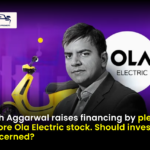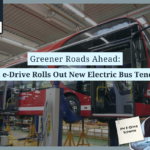
The Electric Vehicle (EV) Industry Under Trump’s Presidency: A Complex Shift in Dynamics
President-Elect Donald Trump has branded the Inflation Reduction Act (IRA) a “green new scam,” vowing to rescind funding for the 2022 climate law, which allocates over $8.5 billion in incentives for U.S. households to adopt green technologies. However, clawing back funds already allocated would be challenging, though future disbursements could be withheld.
The IRA provides substantial incentives, including up to $14,000 for lower-income households to install energy-efficient appliances and $7,500 for electric vehicle tax credits. Households are also eligible for a 30% tax credit for solar panels, and certain appliances offer substantial rebates.
Trump’s Stance on EVs and Climate Change
During his presidency, Donald Trump was a vocal critic of renewable energy initiatives and policies aimed at curbing carbon emissions. One of his first actions after taking office was to withdraw the U.S. from the Paris Climate Agreement, a global pact designed to reduce greenhouse gas emissions. His administration was also known for rolling back various environmental regulations, including fuel efficiency standards for cars — measures that could have hampered the growth of the EV sector by allowing traditional automakers to focus less on developing cleaner alternatives.
Trump was a firm believer in the continued dominance of fossil fuels and often questioned the economic viability of electric vehicles. He ridiculed EVs for being too expensive and heavily reliant on government subsidies, portraying them as an impractical solution to the transportation needs of the average American. “Electric cars are too expensive and take too long to charge,” he stated on multiple occasions, portraying the EV market as something destined for niche status rather than mainstream adoption.
His administration’s stance was largely pro-fossil fuel and centered on supporting the oil, coal, and natural gas industries. Policies, such as easing regulations on drilling and reversing restrictions on oil exploration, contrasted sharply with the priorities of the green energy sector. Traditional automakers, like Ford, General Motors, and Chrysler, who had extensive investments in internal combustion engine (ICE) vehicles, received favor under his policies, while companies like Tesla, the undisputed leader of the electric vehicle revolution, were often viewed with skepticism by the administration.
Elon Musk: A Wild Card in the EV Narrative
Despite Trump’s ambivalence toward electric vehicles, one of the most significant figures in the global EV revolution was an outspoken supporter of his administration — Elon Musk, the CEO of Tesla. Musk’s presence in the EV narrative during the Trump years was both complex and crucial.
Musk’s relationship with Trump was filled with tension. He joined Trump’s business advisory council after the election, hoping to influence the administration’s policies on manufacturing and innovation. However, Musk resigned in 2017 after Trump pulled the U.S. out of the Paris Agreement, making it clear that he could not support an administration that ignored climate change. Despite their ideological differences, Trump often praised Musk’s entrepreneurial spirit and lauded Tesla as an example of American innovation and job creation, though the focus was more on economic growth than environmental benefits.
Tesla’s rapid growth during Trump’s presidency is a testament to Musk’s resilience and the larger forces driving the electric vehicle market. Under Trump, Tesla’s market value soared, and the company made significant strides in producing high-performance electric cars. The release of Tesla’s Model 3 — an affordable electric sedan — was a key milestone in making electric vehicles more accessible to the mass market. Despite Trump’s dismissal of EVs, Tesla’s success proved that there was significant consumer demand for electric vehicles. By the end of Trump’s term, Tesla had surpassed traditional automakers, like General Motors and Ford, in market capitalization, further solidifying the notion that electric vehicles were not just a fad, but the future of transportation.
The EV Industry Under Trump: A Mixed Landscape
While Trump’s policies seemed to present a challenge for the EV industry, a closer look reveals that the sector actually experienced significant growth during his presidency. Several factors contributed to this paradox:
- Tesla’s Continued Growth: Under Trump, Tesla’s trajectory defied expectations. The company grew rapidly, becoming the world’s most valuable automaker by market capitalization, surpassing long-established giants like General Motors and Ford. Tesla’s Model 3, a more affordable electric sedan, played a key role in bringing EVs to the mainstream. Consumer demand for electric vehicles continued to surge despite Trump’s skepticism, indicating that the market was increasingly supportive of cleaner, greener alternatives.
- State-Level Initiatives: While the Trump administration rolled back federal regulations, several states, including California, took the lead in promoting electric vehicle adoption. California, with its robust zero-emission vehicle (ZEV) standards, remained a critical market for EVs. In fact, California’s policies often set the tone for the national EV landscape. States like New York, Washington, and Oregon also implemented their own initiatives to promote EV infrastructure and incentives for consumers, offsetting some of the federal government’s regulatory rollbacks.
- Global Expansion: Globally, the electric vehicle market continued to expand during Trump’s presidency, particularly in Europe and China. The European Union introduced more stringent emissions regulations, pushing automakers to invest more heavily in electric vehicle technology. In China, the world’s largest EV market, the government continued to offer incentives for both consumers and manufacturers, ensuring that the country remained a global leader in electric vehicle adoption.
- Technological Advancements: Despite the political challenges, the technological advancements in the electric vehicle sector continued at an accelerated pace. Battery technology, in particular, saw significant improvements, with costs steadily falling and energy density rising. This made electric vehicles more affordable and practical for consumers. Tesla, alongside other manufacturers, also pushed the boundaries of autonomous driving and renewable energy integration, positioning electric vehicles as a key element of the future of mobility.
A Changing Narrative: From Skepticism to Embrace
By the time Trump’s presidency ended in 2021, the narrative around electric vehicles had shifted dramatically. Although Trump remained critical of EVs throughout his tenure, the industry had gained unprecedented momentum. Musk’s influence was undeniable in keeping EVs in the spotlight, as his company continued to grow and innovate, despite the lack of federal support.
Additionally, the global demand for electric vehicles was undeniable. Climate change concerns, the rise of renewable energy sources, and increasingly stringent emissions standards led to a growing demand for cleaner transportation options. As the U.S. transitioned to a new administration in 2021, under President Joe Biden, who embraced a stronger pro-EV stance, the seeds for the EV revolution had already been planted — in no small part due to the technological and economic developments that took place during Trump’s tenure.
Trump’s presidency exposed the tension between political leadership and market-driven innovation. Despite a federal policy environment that often undermined the growth of clean energy solutions, market dynamics — driven by companies like Tesla, global shifts toward sustainability, and changing consumer preferences — ensured that the electric vehicle sector would continue to thrive.
Conclusion: The Resilience of EVs
Trump’s presidency presented challenges for the EV industry, particularly in the form of regulatory rollbacks and a lack of federal support. However, despite these obstacles, the sector continued to grow, driven by innovation, market demand, and global momentum. The rise of electric vehicles — spearheaded by companies like Tesla — proved that clean transportation was not just a political or ideological debate but an inevitable shift toward a more sustainable future.
As the world transitions to cleaner technologies, the legacy of Trump’s presidency will be viewed as a time when the EV industry navigated significant political and regulatory challenges and yet found ways to thrive. Ultimately, it was the resilience of EVs — propelled by technological advancements, shifting consumer preferences, and global market forces — that ensured the continued momentum of the electric vehicle revolution.









